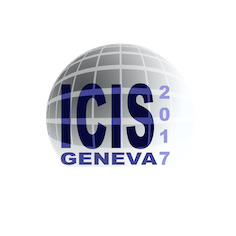Speaker
Description
Linac4 cesiated surface negative ion source is required to produce 50 mA of H$^-$ ions within a transverse rms emittance of 0.25π mm∙mrad [1,2]. In order to achieve the requirements, it is necessary to optimize the H$^-$ beam extraction from the Linac4 negative ion source. Recently, the extraction region of the Linac4 ion source has been modeled by three- Dimensional Particle in Cell (3D-PIC) method in Ref. [3] to analyze the effects of the operation parameters (e.g. magnetic filter strength) on the H$^-$ extraction. However, the effects of the operation parameters have not yet been completely understood. The final goal of this study is to make clear the effects of the operation parameters on the H$^-$ extraction. For this purpose, it is necessary to carry out the numerical simulations for a wide range of the parameter space.
Several 2D-PIC and 3D-PIC models for the H$^-$ extraction have been developed up to now [4-7]. Such 2D models are very useful to understand the basic physics of the H$^-$ extraction [4-6]. And they are suitable for the wide range of the parameter survey of the operation parameters because their computational costs are very small. However, the 2D models are not suitable to evaluate the effects above in the quantitative sense. For example, the beam halo ratio calculated by 2D model is significantly larger than that in the experiments. On the other hand, 3D models give a quantitatively reasonable result. However, 3D models are too massive to perform a wide range of the parameter survey.
In this study we have developed a new 2.5D PIC model, in which particle losses perpendicular to the calculation plane are taken into account. The 2.5D model gives good agreements with the experiments on the H$^-$ beam current and the e/ H$^-$ ratio. Now we are validating the beam divergence obtained by the 2.5D model. After that verification, the effects of the operation parameters (e.g. extraction voltage and plasma electrode shape) will be studied. In addition, the transport of the surface produced H$^-$ ions which is deeply related to the H$^-$ beam current and emittance will be also analyzed.
References
[1] J. Lettry, et. al., AIP Conf. Proc. 1655, 030005 (2015).
[2] J. Lettry, et. al., Rev. Sci. Instrum. 87, 02B139 (2016).
[3] S. Mochalskyy, J. Lettry, T. Minea, A. F. Lifschitz, C. Schmitzer, O. Midttun, and D. Steyaert, AIP Conf. Proc. 1515, 31 (2013).
[4] K. Miyamoto, S. Okuda, A. Hatayama, M. Hanada and A. Kojima, Appl. Phys. Lett. 102, 023512 (2013).
[5] S. Kuppel, D. Matsushita, A. Hatayama and M. Bacal, J. Appl. Phys. 109, 013305 (2011).
[6] I. Goto, K. Miyamoto, S. Nishioka, S. Mattei, J. Lettry, S. Abe and A. Hatayama, Rev. Sci. Instrum. 87, 02B918 (2016).
[7] S. Nishioka, I. Goto, K. Miyamoto, A. Hatayama and A. Fukano, J. Appl. Phys. 119, 023302 (2016).




